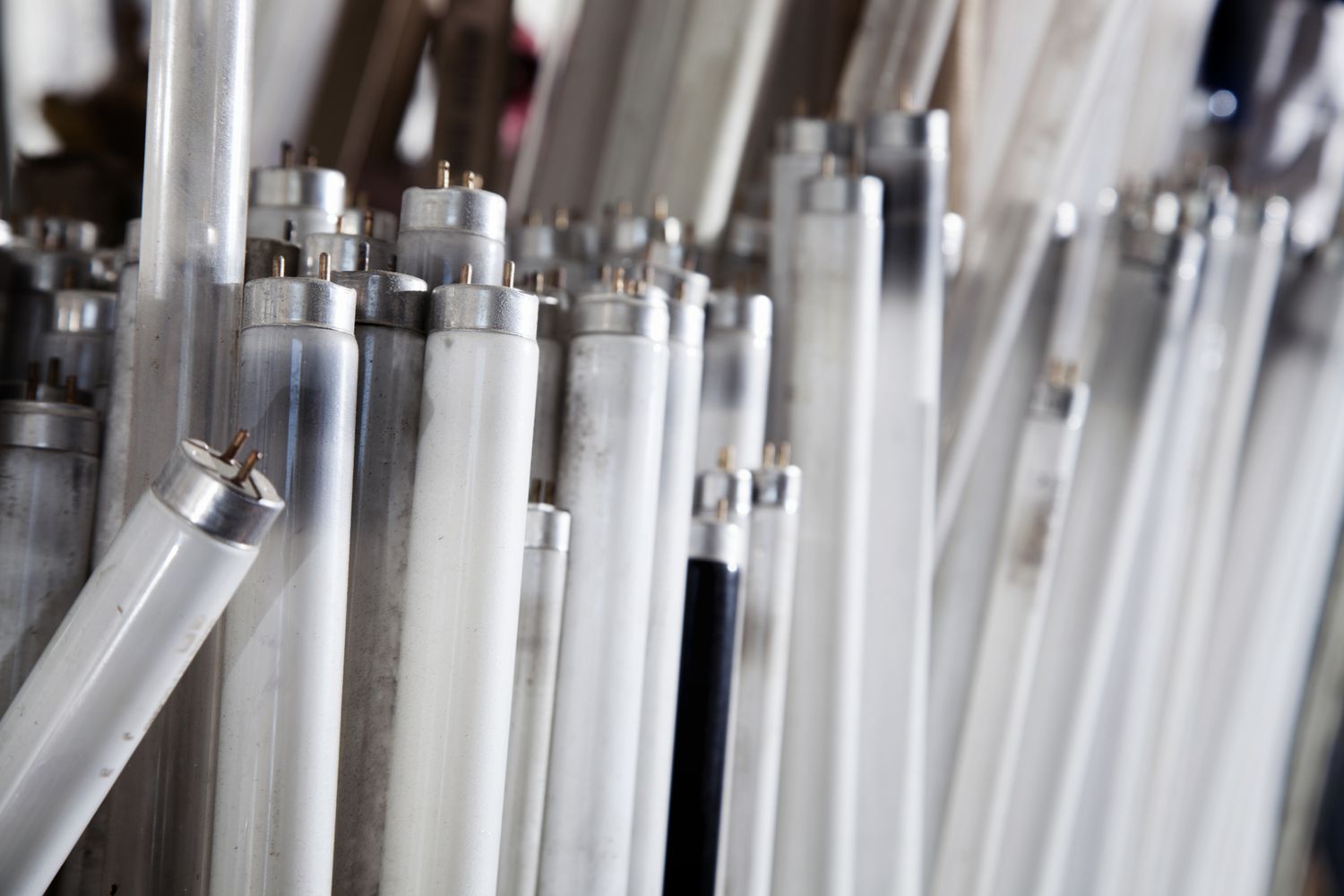[ad_1]
Much of the discussion about mercury and fluorescent lightbulbs have been around the compact fluorescent lights, (CFLs) also known as “toxic Gorebulbs.” They had a tiny bit of mercury, about 1 milligram, and many people have replaced them with light emitting diodes (LED) bulbs.
But the real mercury problem is with the long thin fluorescent tubes that are in offices, factories, public spaces, and even in some homes. These have a lot of mercury in them—2 to 8 milligrams in each, averaging 2.7 milligrams—and there are billions of these bulbs still in use. Now a new study published by the American Council for an Energy-Efficient Economy (ACEEE), the Appliance Standards Awareness Project (ASAP), CLASP, and the Clean Lighting Coalition calls for their phaseout.
Even after LED lights were common, the T8 bulbs (the most common variety, one inch in diameter and four feet long) were not subject to any regulation because they were more efficient and cost-effective than LEDs, but that is no longer true as the LEDs have become cheaper and better.
“Fluorescent bulbs used to be the energy-efficient option, but that’s just not the case anymore. LEDs have changed the game and we found there’s no good reason to keep using fluorescents at this point,” said Jennifer Thorne Amann, a senior fellow at ACEEE and report coauthor in a press It’s Time to Phase Out Fluorescent Lightbulbs, Report Finds.
It’s estimated that 75% of fluorescent bulbs are not recycled properly. The mercury from them eventually ends up in rivers, lakes, and oceans, where it is turned into extremely toxic methylmercury through the action of microbes. This then bio-accumulates in fish and shellfish, which is why seafood is the leading source of human exposure.
While fluorescent bulbs are not the only source of mercury—it is released into the air when coal or gasoline is burned—bulbs remain a major source of metallic mercury, and one now that can be easily eliminated. The Clean Lighting Coalition estimates fluorescent lighting represent 9.3-10.3% of total mercury emissions, although the lighting industry says it is considerably less.
The environmental benefits are considerable. According to the study:
- Rapidly phasing out most fluorescent lighting would prevent lamps containing 16,000 pounds of mercury from being sold and installed through 2050, reducing a substantial source of mercury pollution in our air and soil.
- Electricity savings from a complete transition to LED lighting would cut annual carbon dioxide emissions in 2030 by 18 million metric tons, an amount equal to the annual emissions of four million typical passenger cars. On a cumulative basis,a phaseout would cut carbon dioxide emissions by more than 200 million metric tons through 2050.
Jennifer Thorne Amann et al.
Replacing incandescent bulbs with LEDs was a no-brainer: They use one-tenth of the power. Replacing fluorescent tubes was not so straightforward. As the table below shows, LED bulbs are more efficient, but not by much, and still cost more, although the lifecycle savings are significant. But this was not the case until recently; as an article in Greentech Media shows, not that long ago an LED replacement bulb cost $70 and put out less light. They often needed new fixtures as well.
Jennifer Thorne Amann et al.
Now, there are drop-in replacements designed to work with older fixtures, and there is no good reason not to replace the fluorescents with LEDs. As co-author Joanna Mauer noted, “LEDs are now widely available as drop-in replacements for fluorescent bulbs. In addition to not containing mercury, LEDs last about two times longer than fluorescents and cut energy use in half. Any increase in initial price more than pays off through the reduced electricity costs.”
Replacing compact fluorescents with LEDs was also a no-brainer. The light quality, rated by the Color Rendering Index, (CRI) is far higher. Fluorescent tubes were never pretty and the LEDs are not significantly better—they both work by having ultraviolet light excite phosphors. Fluorescent bulbs also last a long time, as much as eight years, so there is no serious urgency to replace them.
The industry isn’t much help either; making the traditional T8s is very profitable. According to the Clean Lighting Coalition:
“Despite the widespread availability of cost-effective, mercury-free alternatives, the GLA [Global Lighting Association] continues to advocate for and sell fluorescents because it is profitable. Some companies that are members of the GLA make more profit selling fluorescent lamps than LED lamps. For example, the most recent financial statement of Signify/Philips show that the profit from conventional lighting (largely fluorescent tubes) in 2021 was 36% higher than the profit from digital lighting (including LED tubes). In Signify’s 2020 Annual Report to Shareholders, they reference their on-going corporate strategy to be the last company in the world selling conventional lighting due to the higher profitability.”
At the end of March, 2022, the Minimata Convention on Mercury is meeting to consider a ban on the manufacture, import, and export of fluorescent bulbs in the participating countries. No doubt the industry will continue to fight this, as it calls the Minimata proposal “premature and currently unrealistic for many regions” and wants to delay the phaseout. But as the report makes clear, there is no reason to do so anymore. Ana Maria Carreño, director at CLASP, which funded the report, says: “It is time to say farewell to fluorescents.”
Correction—March 8, 2022: The name of Joanna Mauer was misspelled in a previous version of this article.
[ad_2]
Source link
